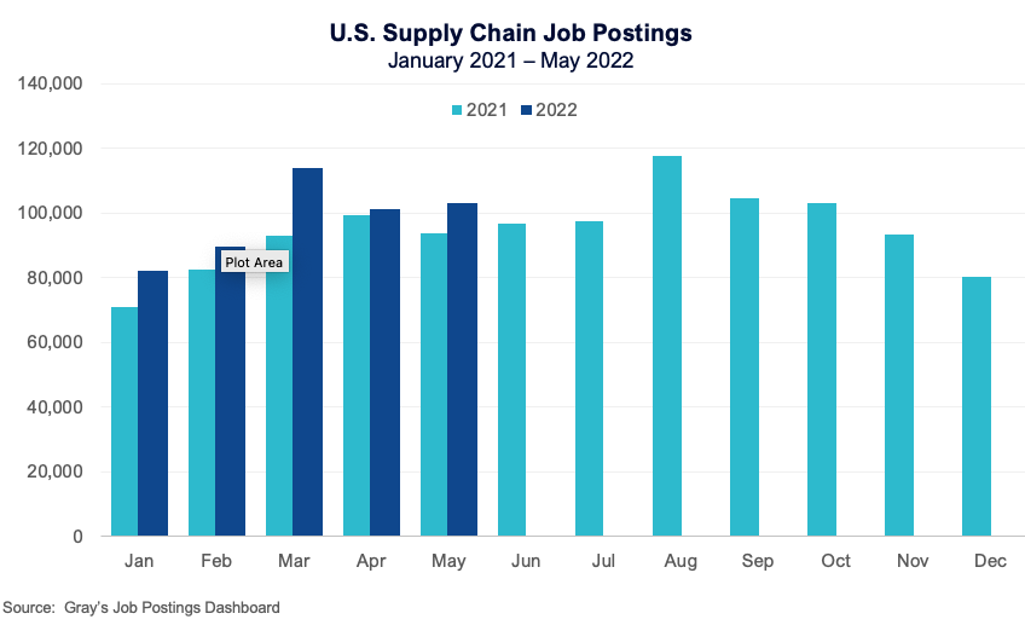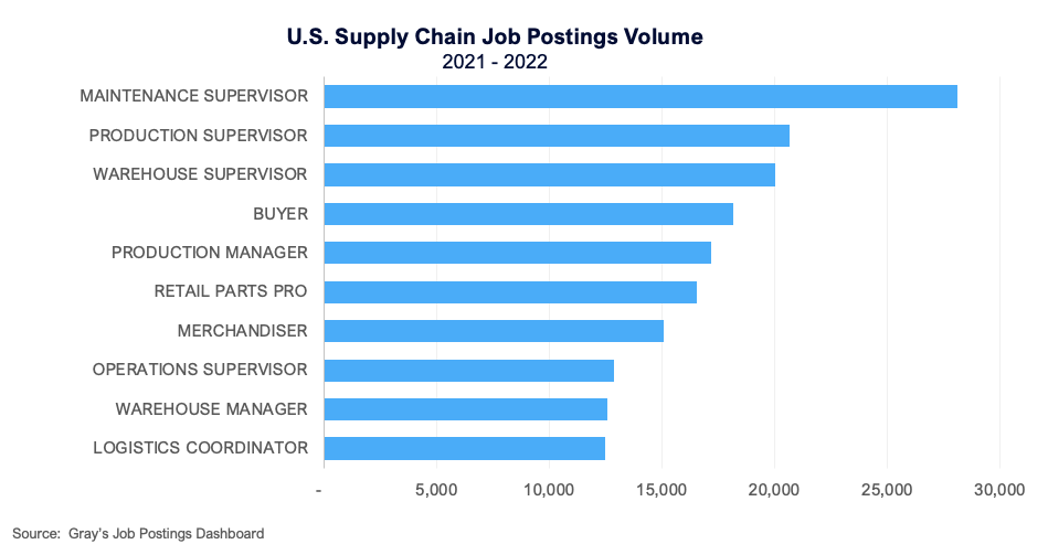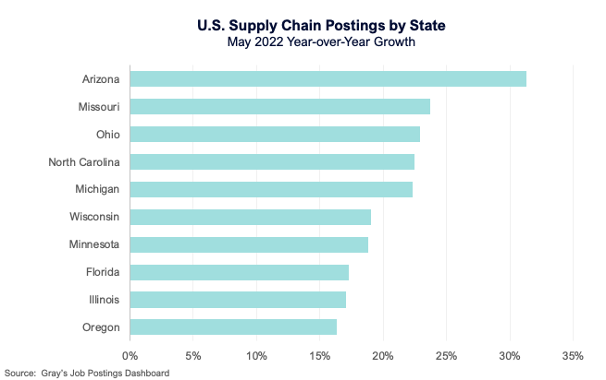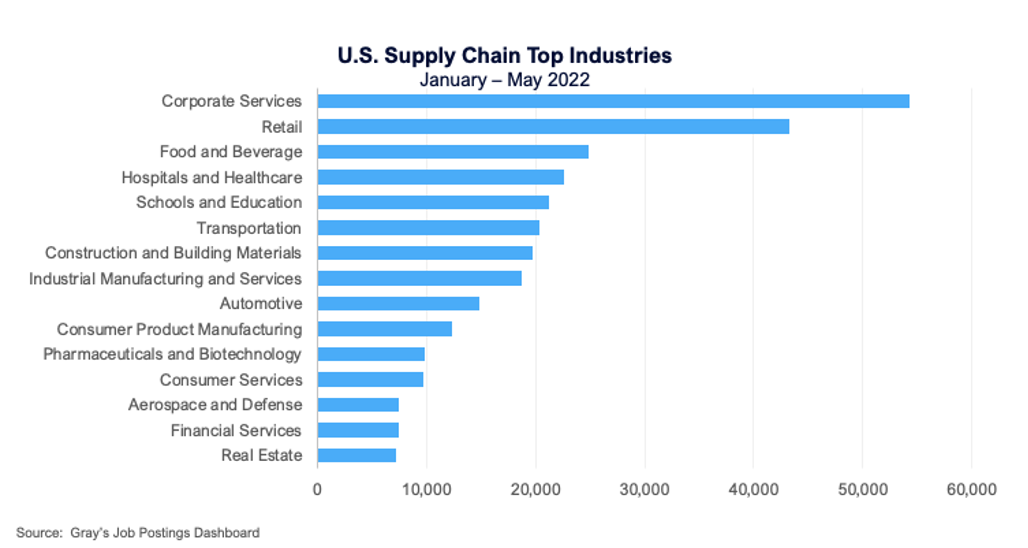Before you file this under “tell me something I don’t know,” the data regarding employment opportunities shows a few interesting developments. It might even raise a few questions for you, such as, “what can community colleges take away from this,” “should universities start looking at a master’s program in Supply Chain,” or my favorite, “can western schools save our supply chain?”
Pandemic Job Postings Before and After
In December 2020, Gray published a blog about the pandemic’s ravaging effects on supply chains. Products were trapped upstream causing disruptions in the chain; some products were unavailable and some were no longer in demand. In the first quarter of 2022, things were looking up – that is, until April, when strains mounted again. As you might expect, Gray DI’ Job Postings database shows a continued upswing in supply chain job postings.

Supervisors Needed
A more detailed look at job postings filtered by CIP codes and skills for Logistics and Supply Chain Management shows the types of positions companies are looking to fill. Although not all supply chain job postings list an advanced degree for employment, the growth is trending in that direction, only occurring at the bachelor’s and master’s levels. In contrast, associate-level degrees are barely mentioned as a requirement.
According to our job postings dashboard, 53 percent of supply chain postings require a bachelor’s degree, 20 percent a master’s, 25 percent a high school diploma, and .3 percent an associate’s.
 Oh! the Places They’ll Go
Oh! the Places They’ll Go
In May, the highest job posting volume was in California, while the highest growth was in Arizona.


The highest demand for supply chain job seekers is in corporate services, retail, and food and beverage.

Will this job posting growth continue for supply chain graduates? Who knows? But it isn’t slowing down yet.




